✨hello,进来的小伙伴们,你们好耶!✨
🚎🚎系列专栏:【数据结构与算法】
🚀🚀本篇内容:队列从0到1的学习!
⛵⛵作者简介:一名双非本科大三在读的科班Java编程小白,道阻且长,你我同行!
🚍🚍码云存放仓库gitee:Java数据结构代码托管!
一、概念
队列:只允许在一端进行插入数据操作,在另一端进行删除数据操作的特殊线性表,队列具有先进先出FIFO(FirstIn First Out) 入队列:进行插入操作的一端称为队尾(Tail/Rear) 出队列:进行删除操作的一端称为队头(Head/Front)
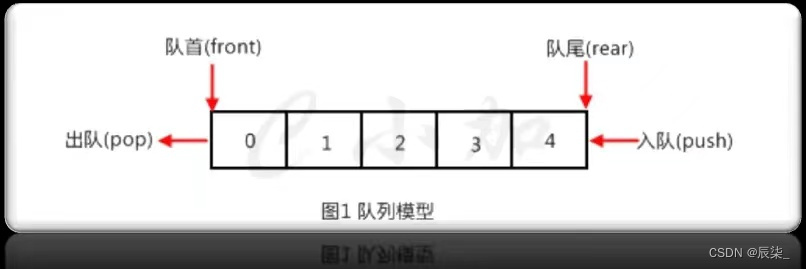
二、 队列的使用
在Java中,Queue是个接口,底层是通过链表实现的。
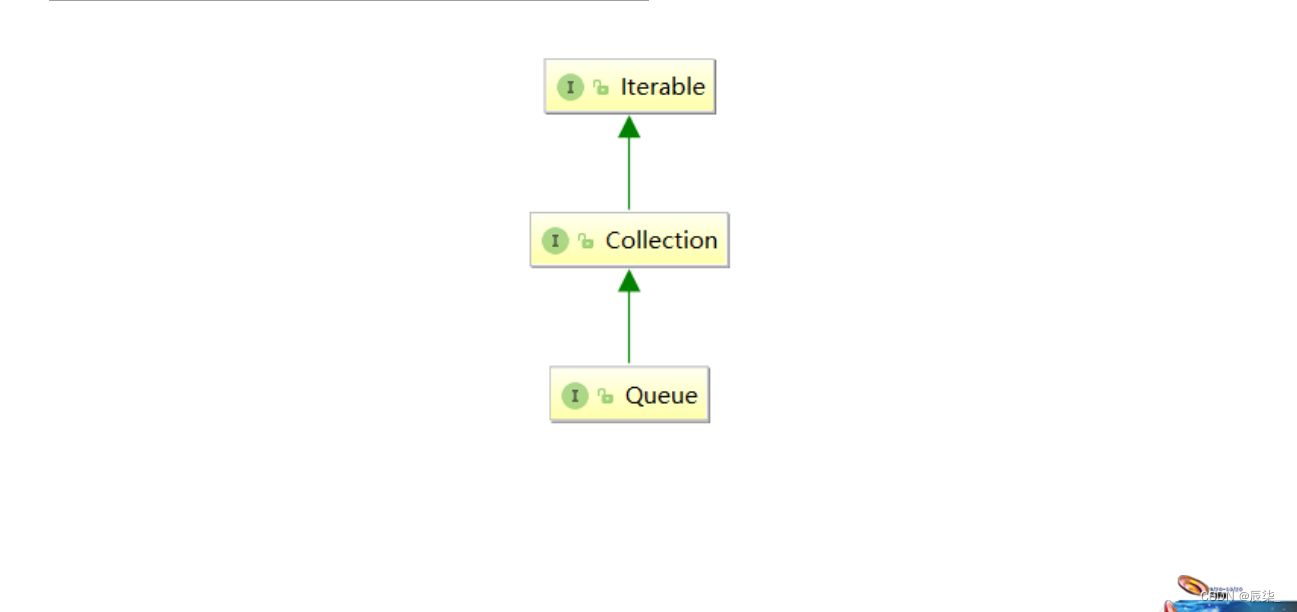
三、常用方法
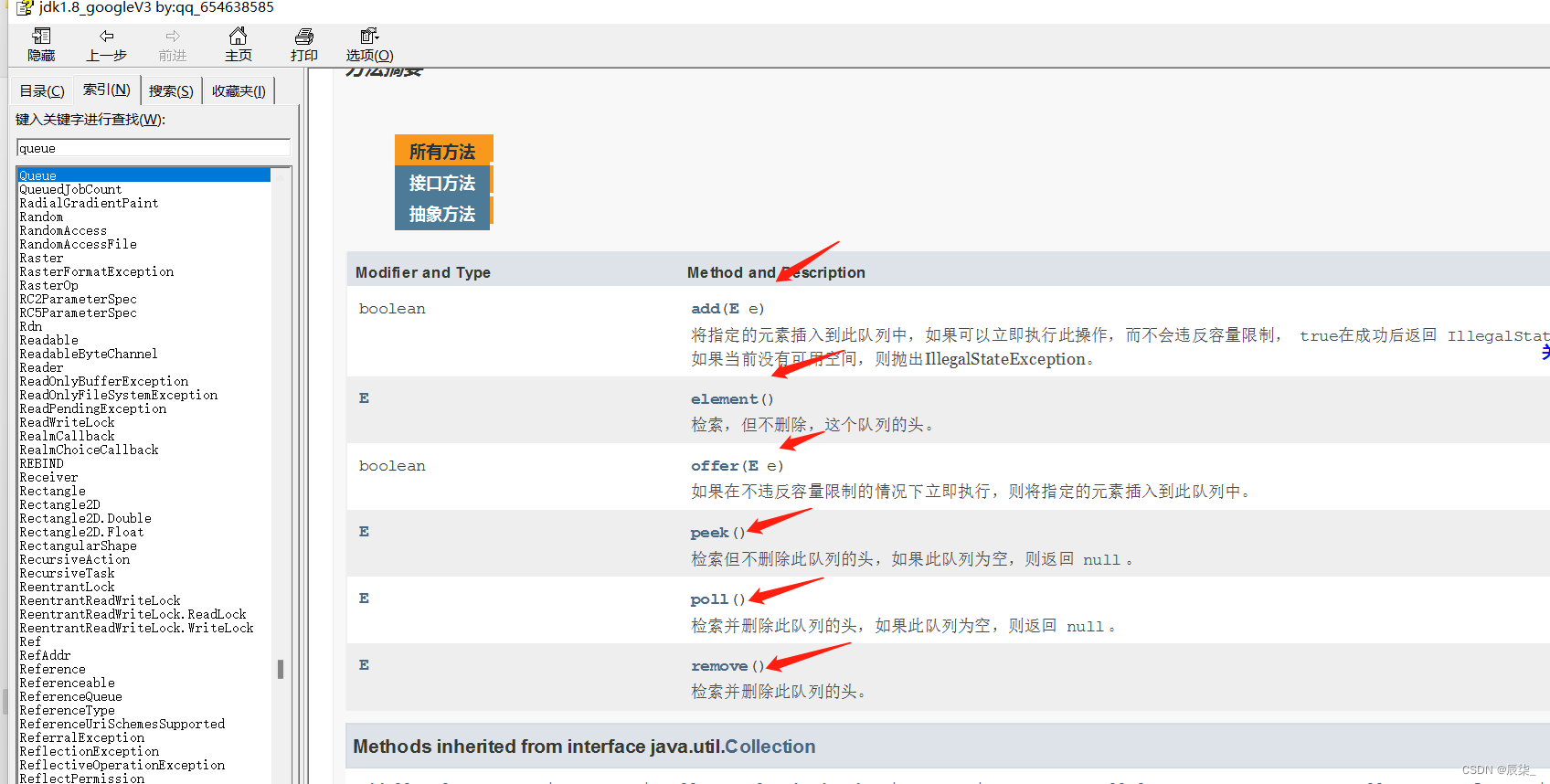
** 代码演示:**
1、入队
public class TestDemo1 {
public static void main(String[] args) {
Queue<Integer> queue = new LinkedList<>();
queue.offer(1);
queue.offer(2);
queue.offer(3);
queue.offer(4);
System.out.println(queue);
}
}
运行结果:
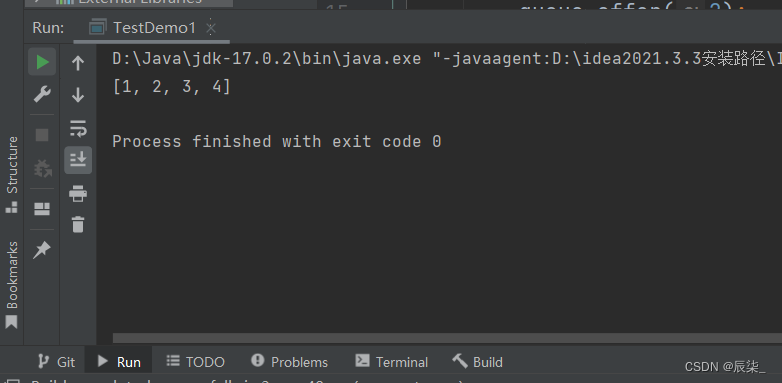
2、出队(这里我们出2个元素,那么队列里的结果应该是剩下3,4)
public class TestDemo1 {
public static void main(String[] args) {
Queue<Integer> queue = new LinkedList<>();
queue.offer(1);
queue.offer(2);
queue.offer(3);
queue.offer(4);
System.out.println(queue);
queue.poll();
queue.poll();
System.out.println(queue);
}
}
运行结果:
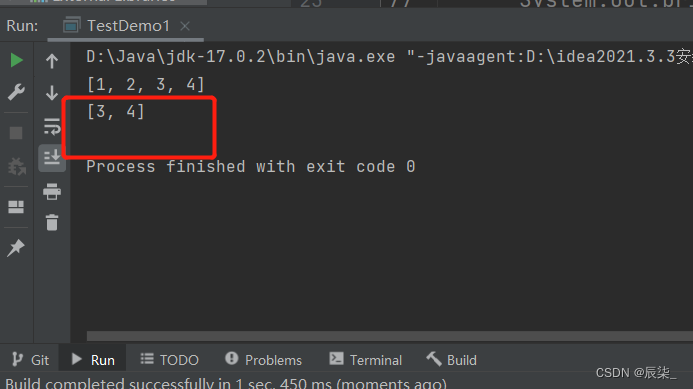
3、获取队头元素
public class TestDemo1 {
public static void main(String[] args) {
Queue<Integer> queue = new LinkedList<>();
queue.offer(1);
queue.offer(2);
queue.offer(3);
queue.offer(4);
int s = queue.peek();//获取队头元素但是不删除
System.out.println(s);
}
}
运行结果:(可以知道我们的peek()方法只是获得队头元素而不是删除队头元素 那么结果应该就是1)
 4、判断队列是否为空
4、判断队列是否为空
public class TestDemo1 {
public static void main(String[] args) {
Queue<Integer> queue = new LinkedList<>();
queue.offer(1);
queue.offer(2);
queue.offer(3);
queue.offer(4);
boolean b1 = queue.isEmpty();
System.out.println(b1);
}
}
运行结果:
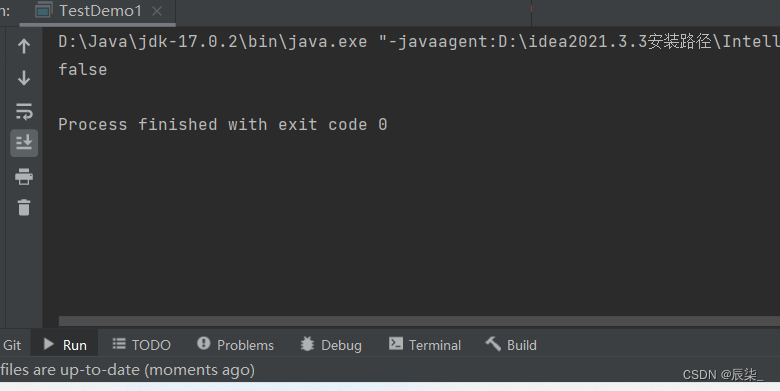
5、获取队列中有效元素的个数
public class TestDemo1 {
public static void main(String[] args) {
Queue<Integer> queue = new LinkedList<>();
queue.offer(1);
queue.offer(2);
queue.offer(3);
queue.offer(4);
System.out.println(queue.size());
}
}
运行结果:
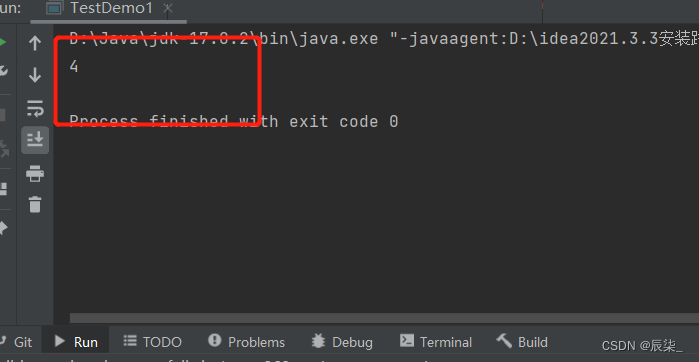
四、队列的模拟实现
1、老规矩还是把我们队列的学习内容放在一个包下。
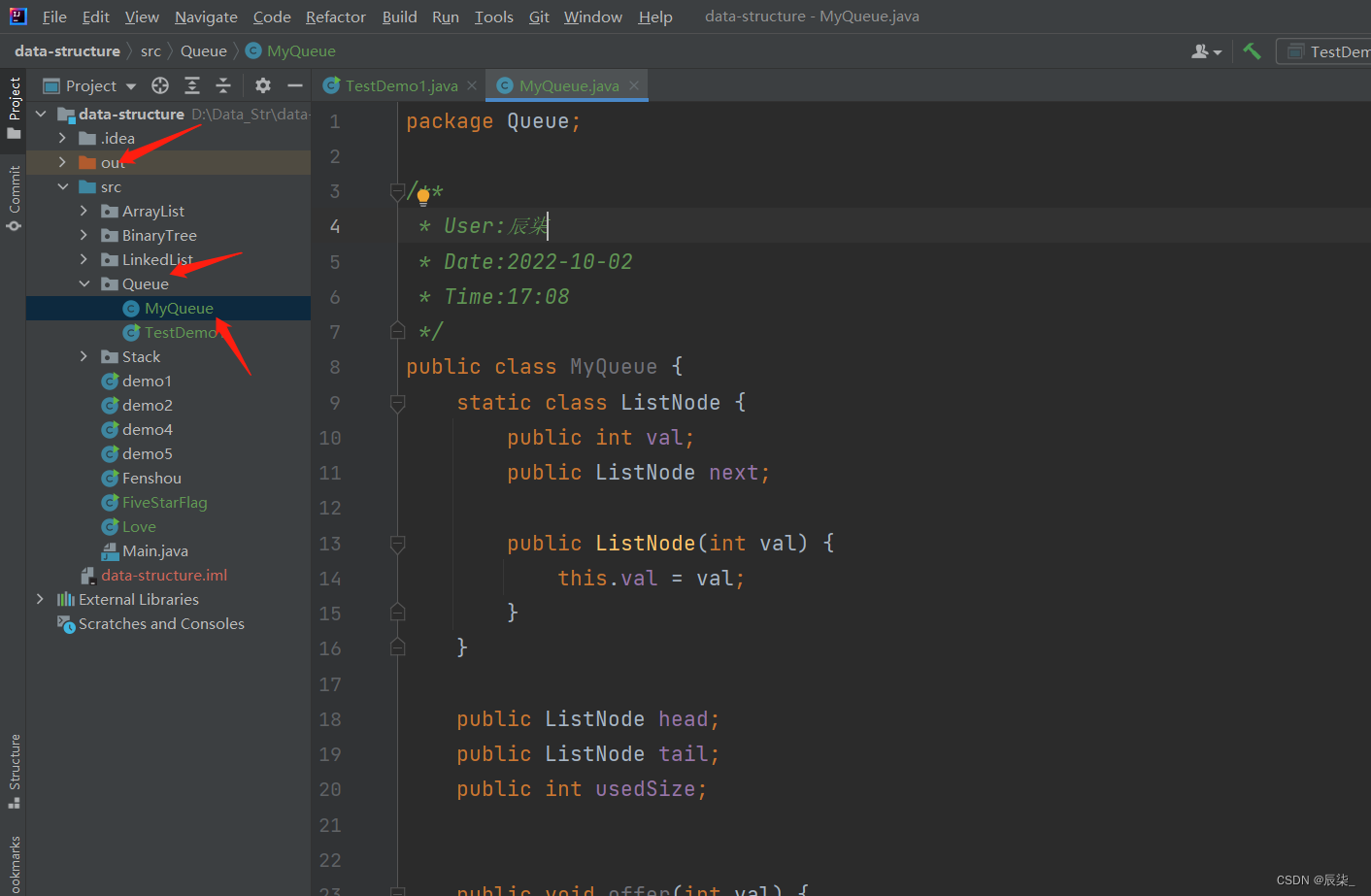
2、所有方法实现代码
package Queue;
/**
* User:辰柒
* Date:2022-10-02
* Time:17:08
*/
public class MyQueue {
static class ListNode {
public int val;
public ListNode next;
public ListNode(int val) {
this.val = val;
}
}
public ListNode head;
public ListNode tail;
public int usedSize;
public void offer(int val) {
ListNode node = new ListNode(val);
if (head == null) {
head = node;
tail = node;
} else {
tail.next = node;
tail = tail.next;
}
usedSize++;
}
public int poll() {
if (empty()) {
return -1;
}
int ret = head.val;
head = head.next;
if (head == null) {
tail = null;
}
usedSize--;
return ret;
}
public int peek() {
if (empty()) {
return -1;
}
return head.val;
}
public boolean empty() {
return usedSize==0;
}
public int getUsedSize() {
return usedSize;
}
}
🍎🍎OK,那么本篇博客先带大家入门一下队列的概念以及方法,接下来的博客我将会更新循环队列 双端队列的实现,以及队列的面试题分析,内容干货满满,期待你的一键三连!🤟🤟
版权归原作者 辰柒_ 所有, 如有侵权,请联系我们删除。